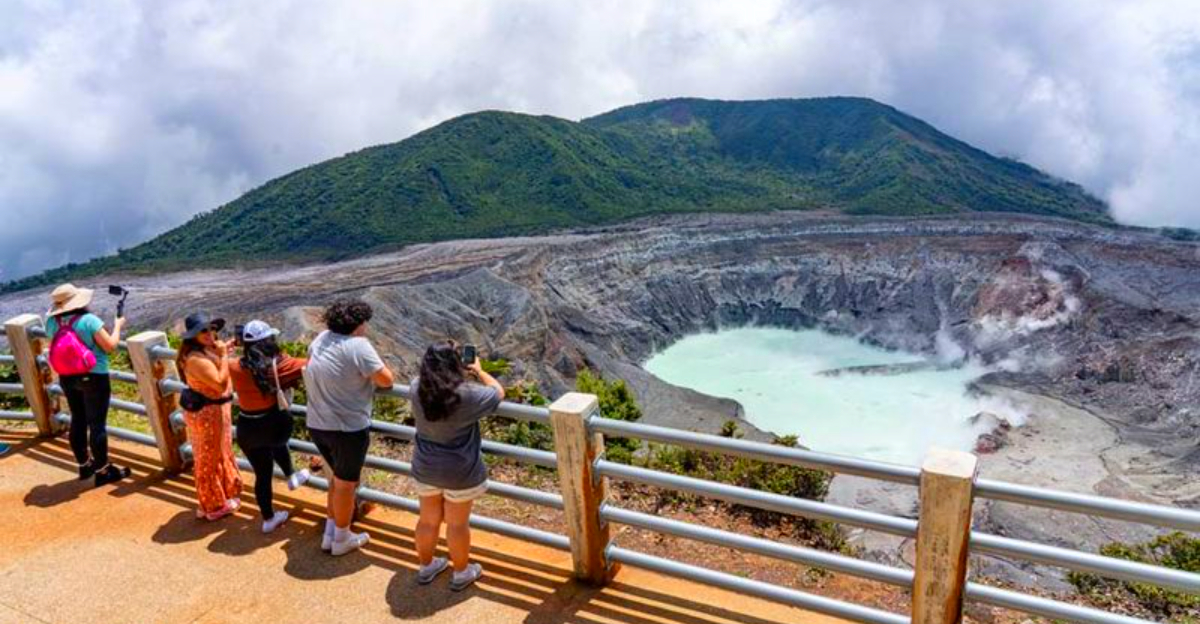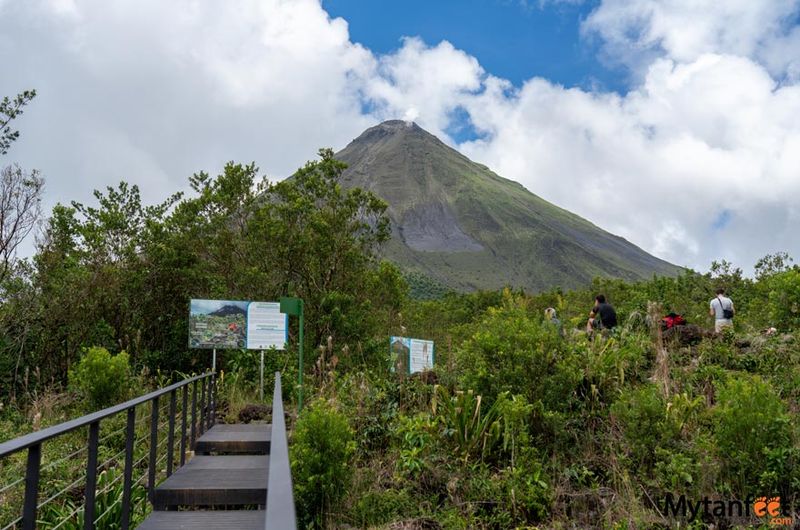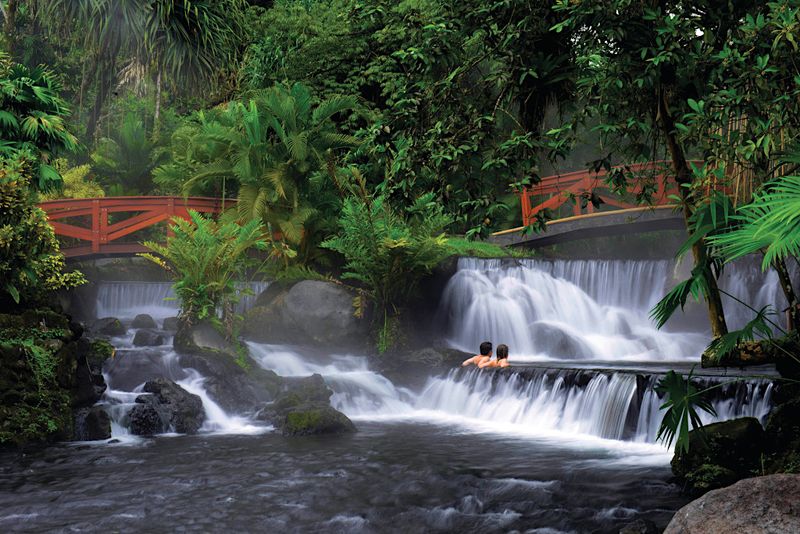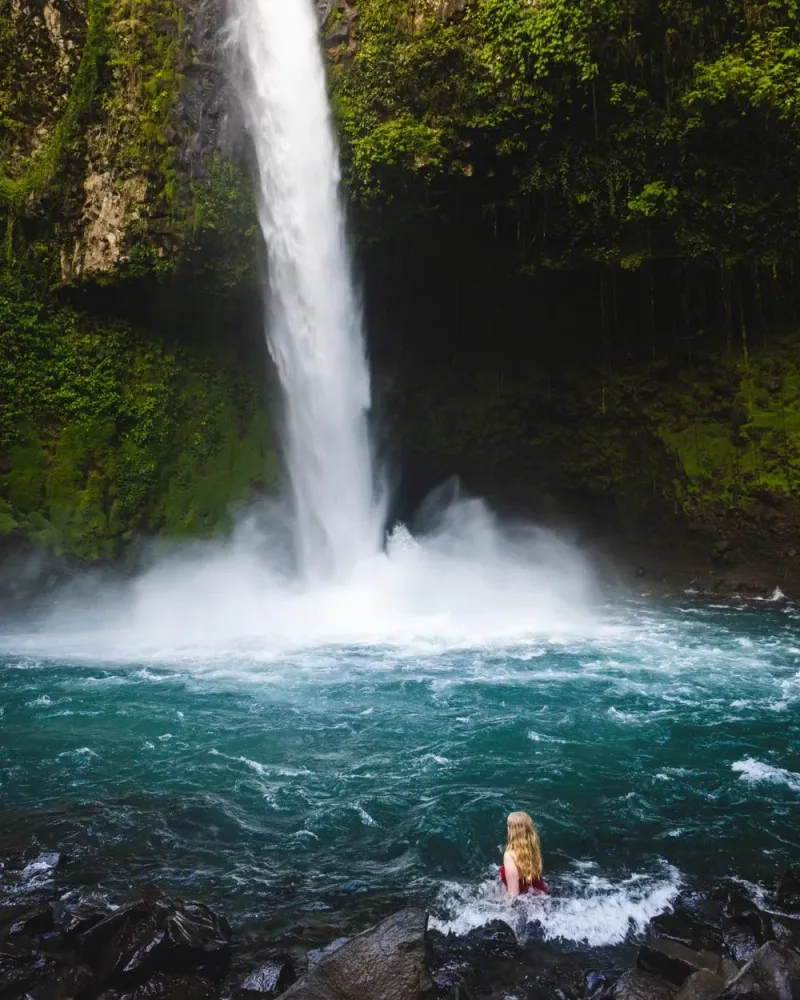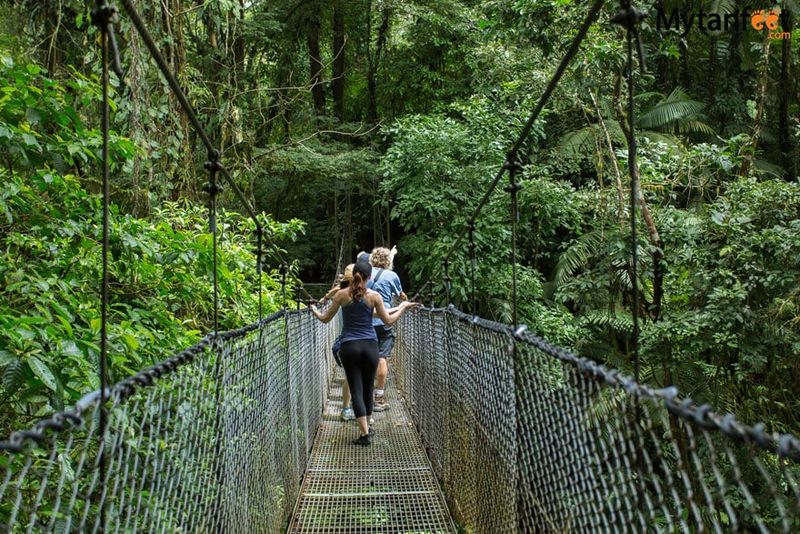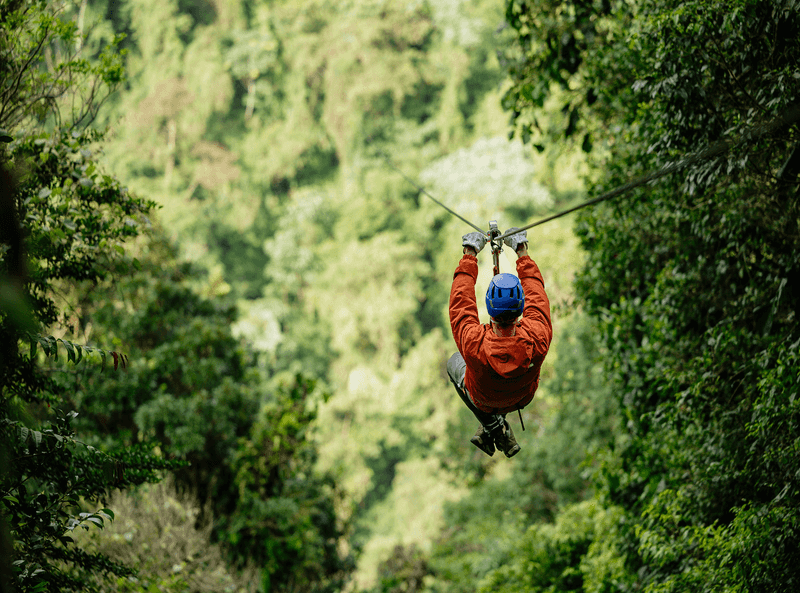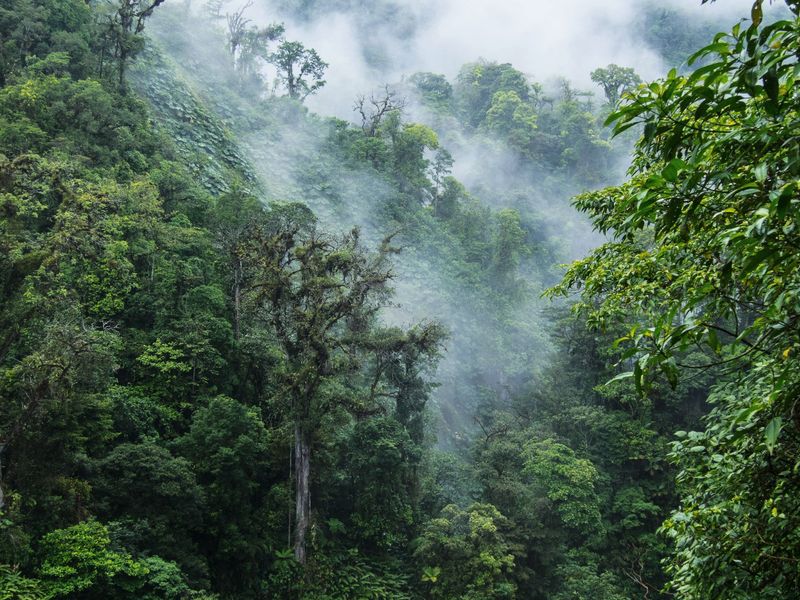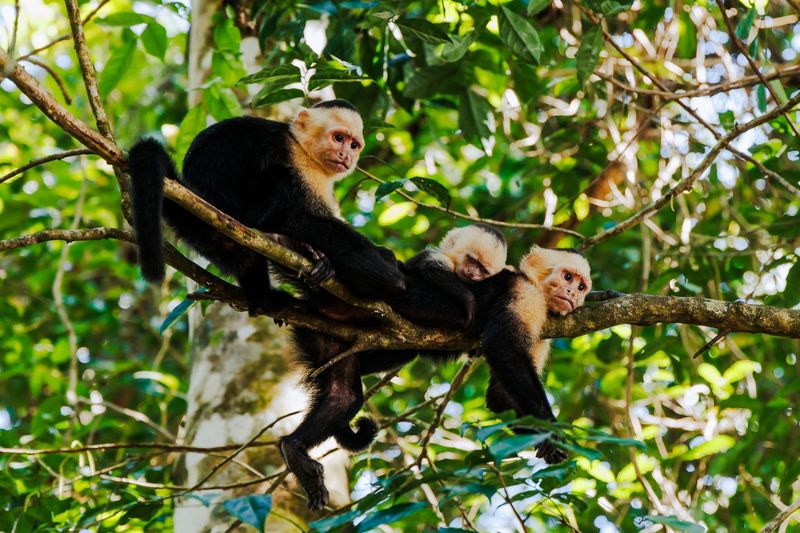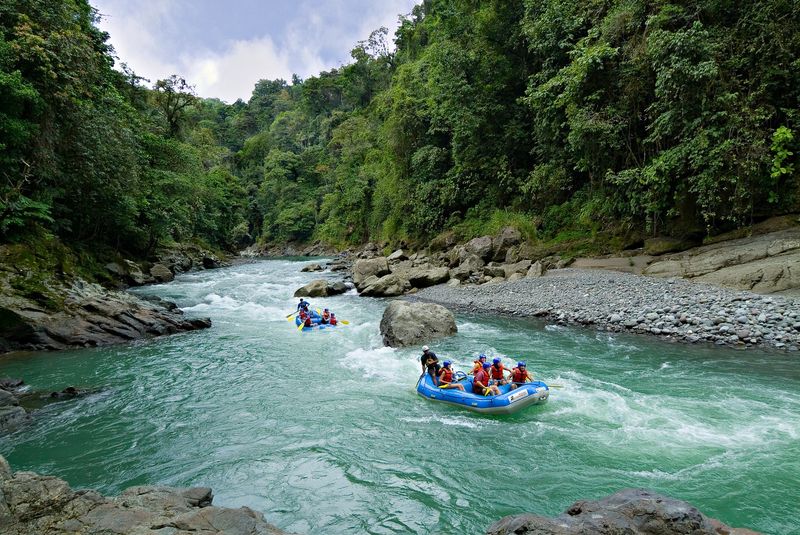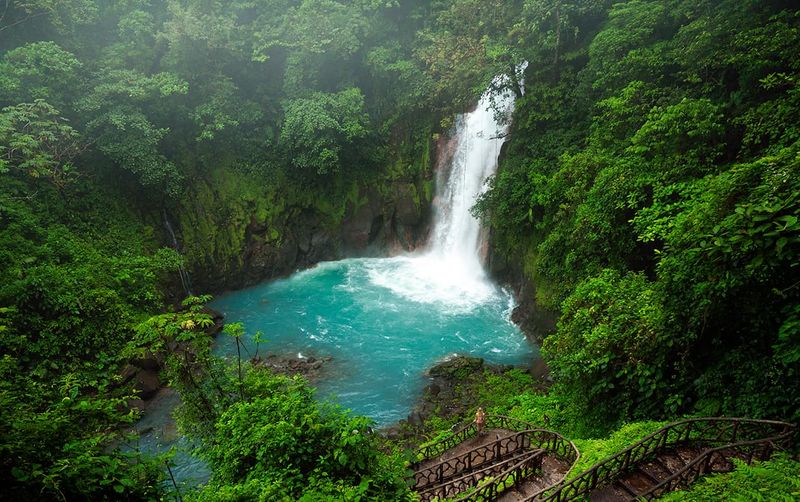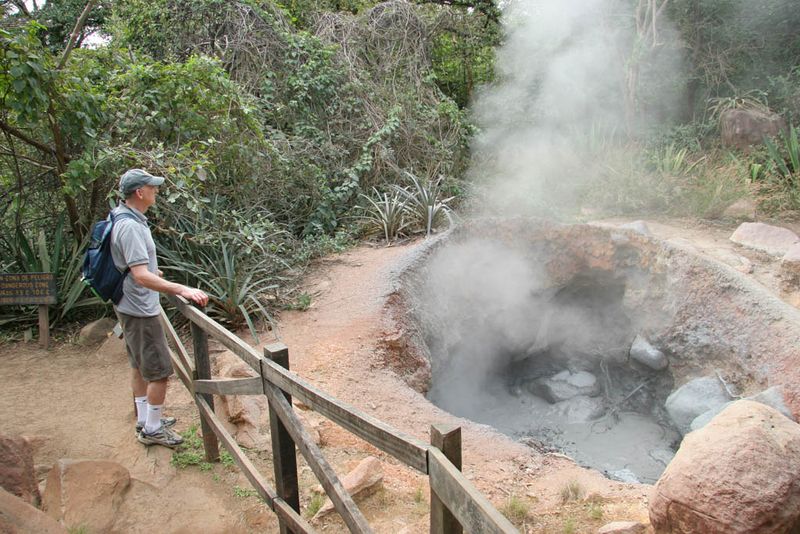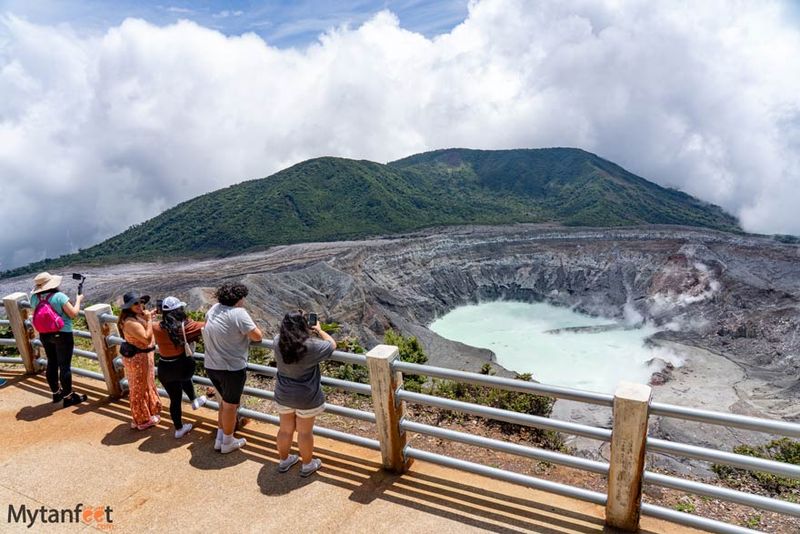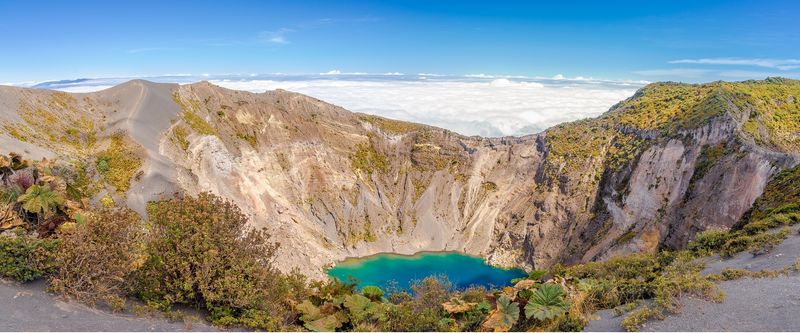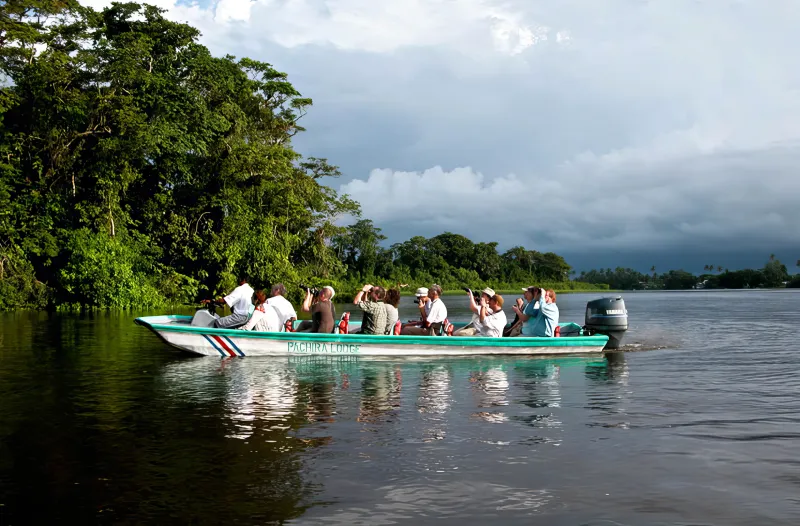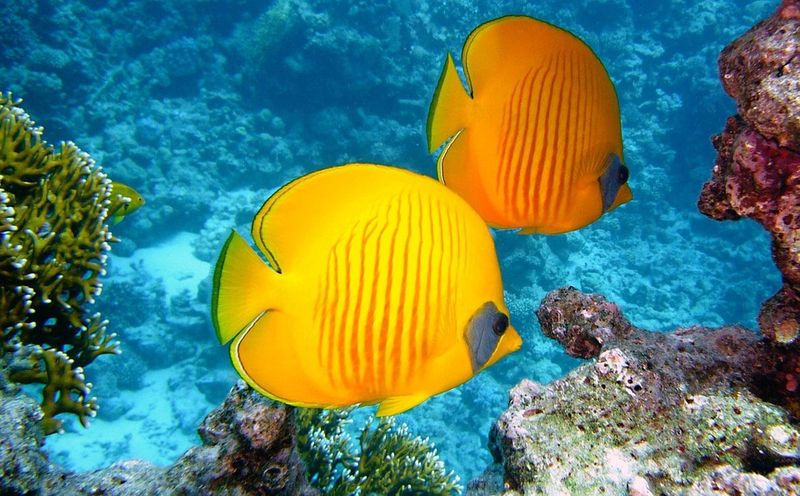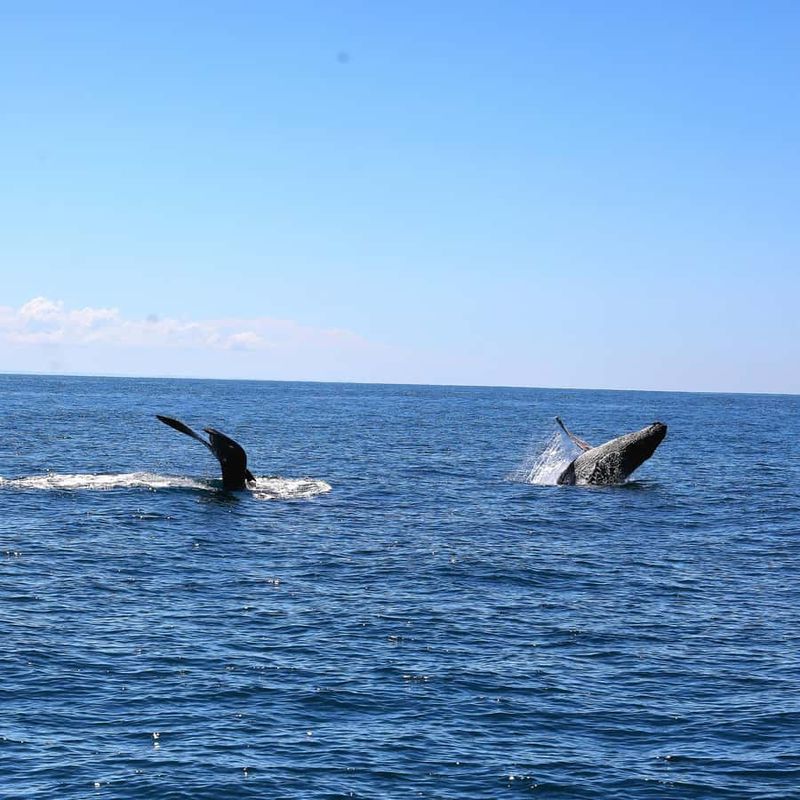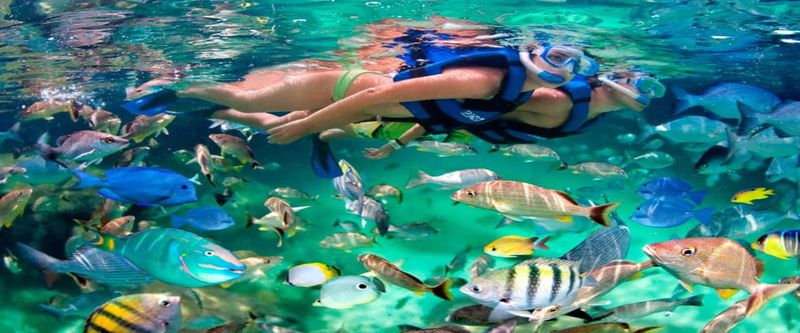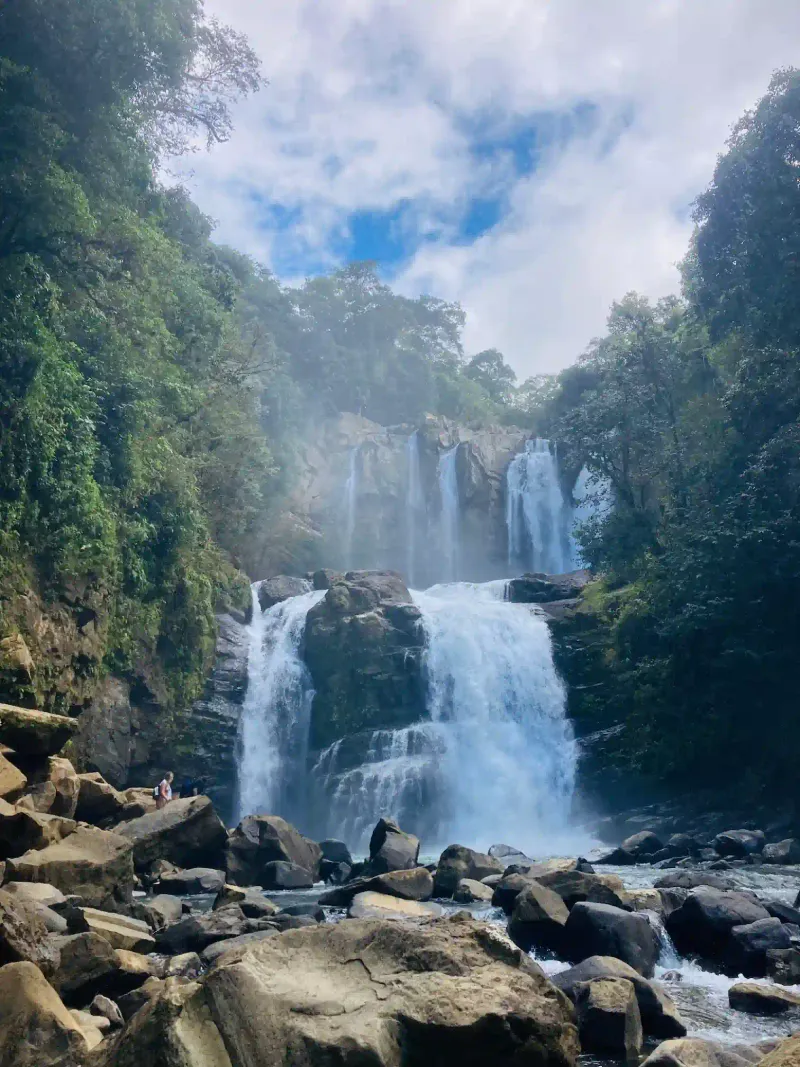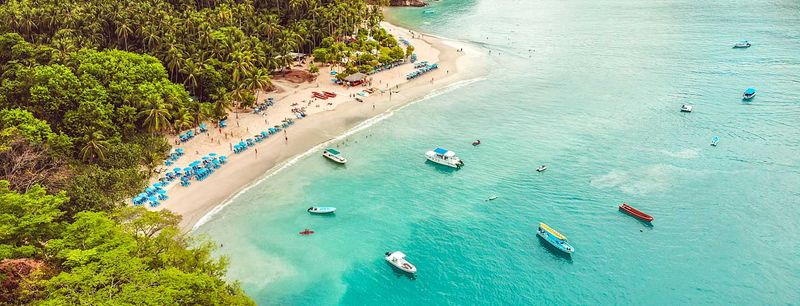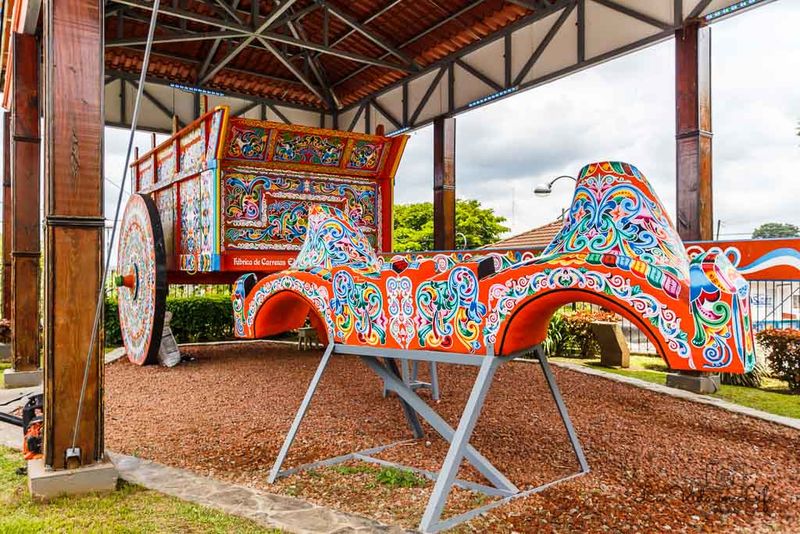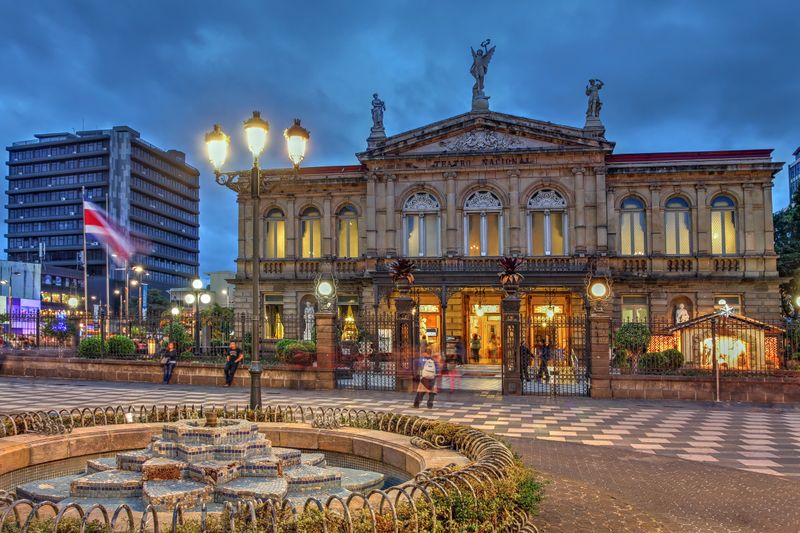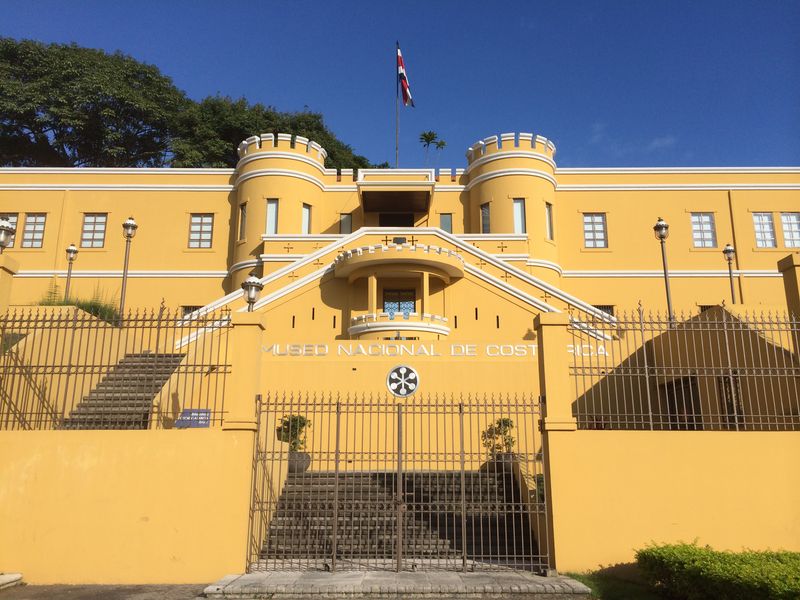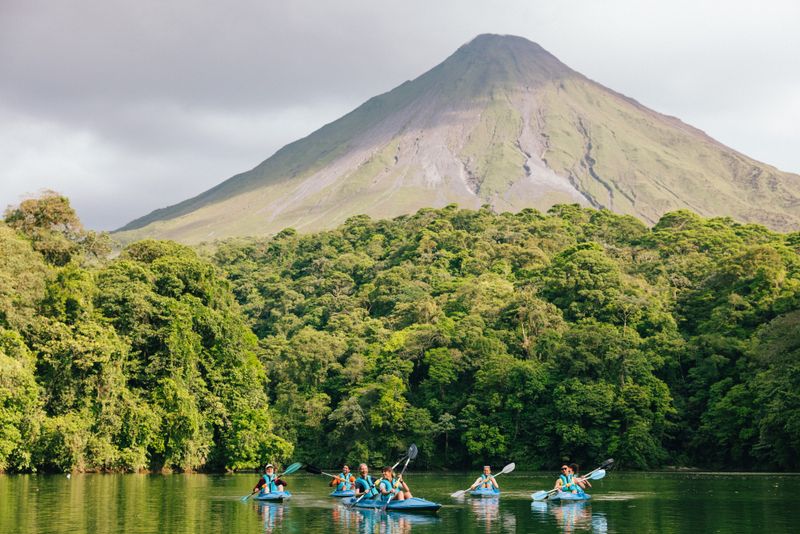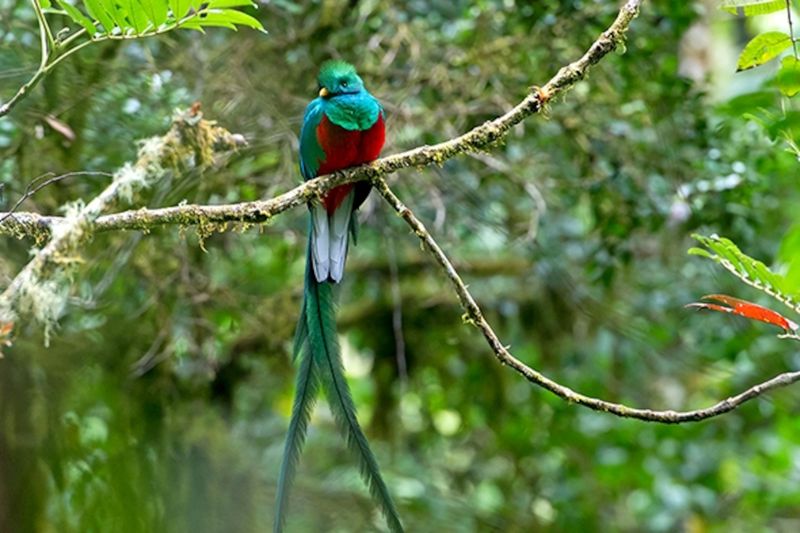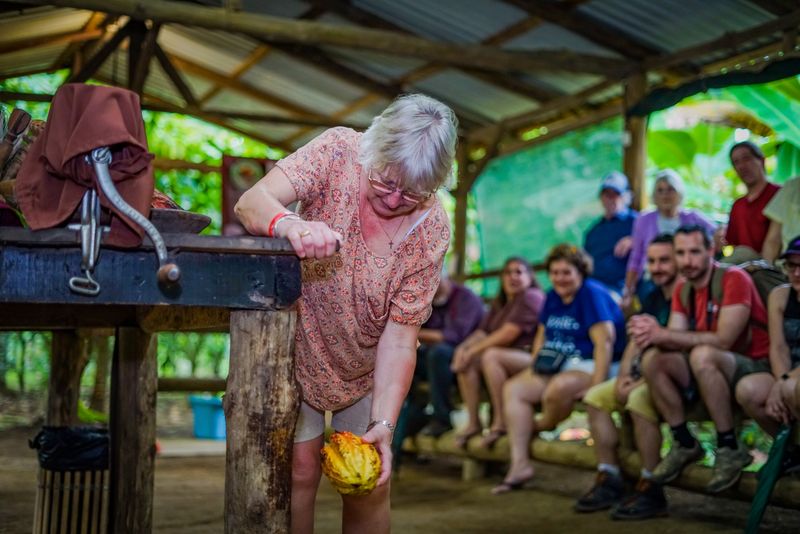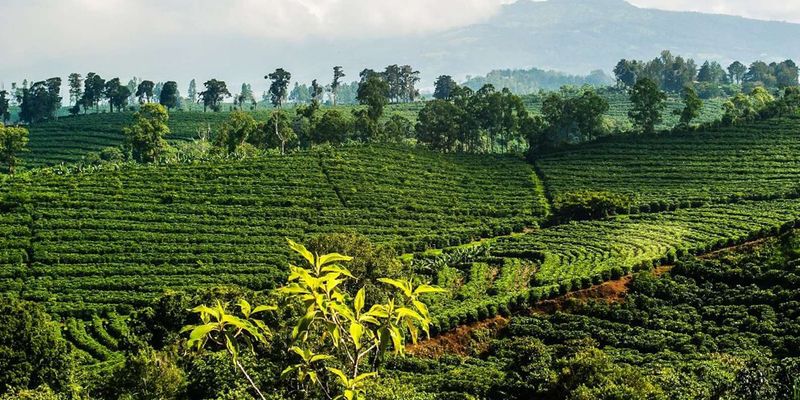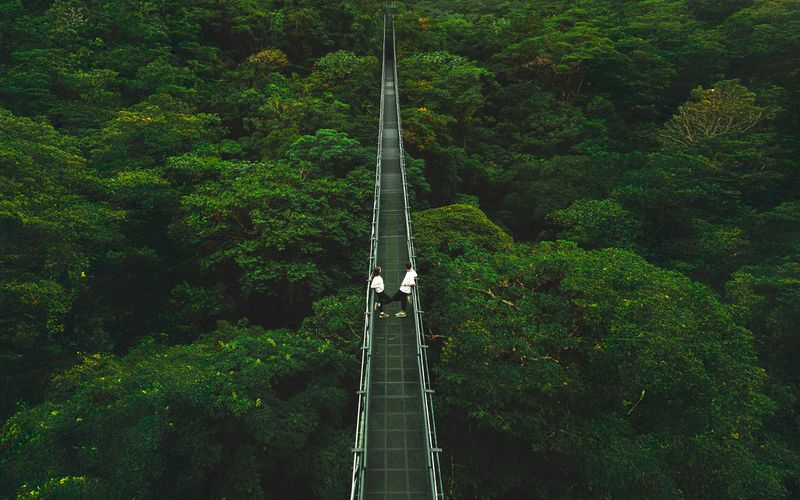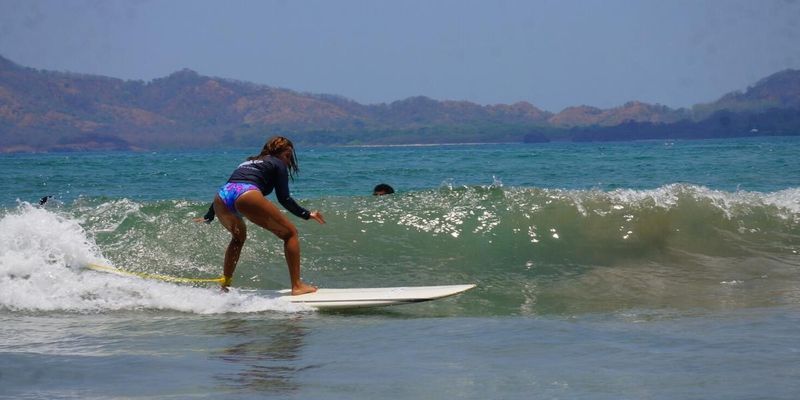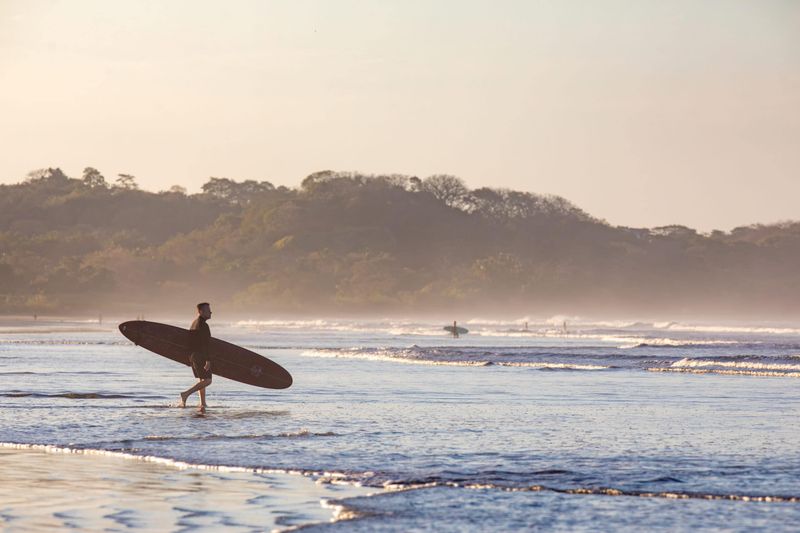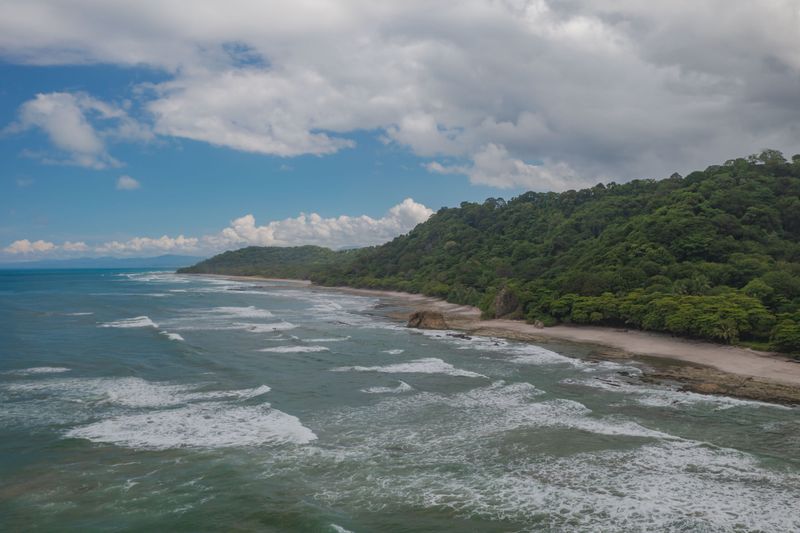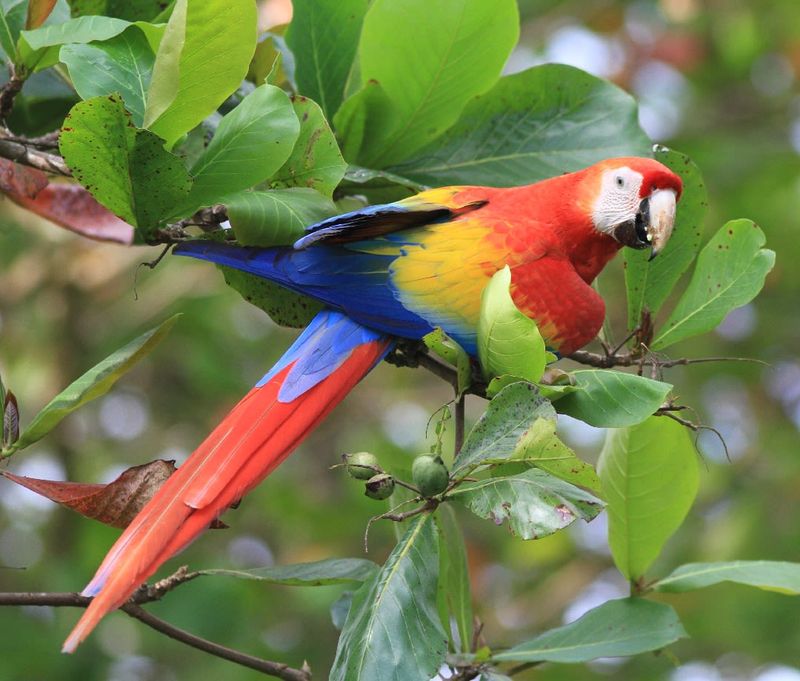Costa Rica packs an incredible variety of landscapes into a country smaller than West Virginia. From steaming volcanoes and misty cloud forests to turquoise waterfalls and Caribbean reefs, every corner offers a new adventure. Whether you’re chasing wildlife, craving adrenaline, or simply want to soak in hot springs under the stars, this Central American gem delivers unforgettable experiences at every turn.
1. Hike Arenal Volcano National Park
Arenal Volcano’s perfect cone dominates the skyline, and hiking its trails feels like stepping onto another planet. Marked paths wind past old lava flows frozen in time, their jagged black rock contrasting with vibrant green regrowth. Rangers maintain the routes carefully, so you can focus on spotting toucans overhead or pausing at panoramic viewpoints.
SINAC manages the park, ensuring trails stay safe and accessible year-round. Morning hikes offer cooler temperatures and fewer clouds, giving you the best chance to photograph the summit. Wear sturdy shoes because volcanic terrain can be uneven, and bring plenty of water for the tropical heat.
2. Soak in Arenal’s Natural Hot Springs at Tabacón
After a day of hiking, nothing beats slipping into Tabacón’s warm, mineral-rich waters. Fed by Arenal’s geothermal aquifer, this landscaped paradise features river-like pools that flow through lush gardens. Each pool has a different temperature, so you can find your perfect soak spot.
Waterfalls massage your shoulders while orchids bloom overhead, creating a spa experience unlike any other. The resort offers day passes and evening packages, with the latter including dinner and access under the stars. Book ahead during high season because word has spread about this slice of volcanic heaven.
3. Descend to La Fortuna Waterfall
More than 500 steps carve a steep path down to one of Costa Rica’s most photographed waterfalls. The descent takes about 20 minutes, but every switchback reveals a new angle of the thundering cascade. When you finally reach the bottom, the roar is deafening and the mist feels like nature’s air conditioning.
A turquoise pool invites brave swimmers, though the current near the falls stays strong. ADIFORT, the local association, maintains the site beautifully, with rest areas and lookout platforms along the way. Remember, what goes down must come up—those steps feel much longer on the return climb.
4. Mistico Arenal Hanging Bridges
Walking among the treetops changes your entire perspective of the rainforest. Mistico’s 15 bridges range from solid platforms to swaying suspension spans, each offering a unique vantage point. Birds that normally hide high in the canopy suddenly appear at eye level, and you might spot sloths draped over branches like furry ornaments.
Both day and night tours operate here, with the nocturnal version revealing an entirely different cast of creatures. Frogs croak, insects chirp, and if you’re lucky, a kinkajou might scamper past your flashlight beam. The trails are well-maintained and suitable for most fitness levels.
5. Zipline with Sky Adventures (Arenal or Monteverde)
Sky Adventures turns adrenaline junkies into flying squirrels. Start with a gondola ride that glides you up through the forest layers, offering a peaceful introduction before the real fun begins. Then clip onto cables that send you soaring above primary forest at speeds that make your heart race.
Professional guides handle all the safety checks, so you can focus on the views and the rush. The longest lines stretch over deep valleys, giving you a bird’s-eye perspective of canopy emergents and distant volcanoes. Both the Arenal and Monteverde locations deliver world-class thrills with impeccable safety records.
6. Explore Monteverde Cloud Forest Biological Reserve
Monteverde’s cloud forest feels like walking inside a living, breathing organism. Mist clings to every surface, moss drapes from branches like green curtains, and the air smells rich with decomposition and growth. This is one of the world’s premier cloud-forest ecosystems, and it shows in every detail.
Birdwatchers flock here hoping to glimpse the resplendent quetzal, whose emerald plumage seems too beautiful to be real. Even if the quetzal stays hidden, you’ll encounter dozens of other species, from hummingbirds to bellbirds. Trails range from easy loops to challenging climbs, all maintained by the reserve’s dedicated staff.
7. Manuel Antonio National Park
Where else can you spot three-toed sloths and capuchin monkeys before lunch, then spend the afternoon on a pristine white-sand beach? Manuel Antonio combines Costa Rica’s best features into one compact park. The trails wind through primary forest before opening onto secluded coves with water so clear you can count fish from the shore.
Buy tickets only through SINAC’s official SICORE system—street vendors offering guide services often operate illegally. The park limits daily visitors to protect the ecosystem, so book ahead, especially during dry season. Bring snacks because no food is sold inside.
8. White-Water Raft the Pacuare River (Class III–IV)
The Pacuare River ranks among the world’s top ten whitewater runs, and one trip explains why. Towering canyon walls draped in jungle close in around you as rapids with names like “Double Drop” test your paddling skills. Between the adrenaline bursts, calm stretches let you float past waterfalls and spot river otters playing on rocks.
Most outfitters run the Lower Pacuare section, which delivers consistent Class III–IV action without requiring extreme experience. Professional guides navigate the tricky bits while keeping the mood fun and safe. Expect to get absolutely soaked and to wear a huge grin the entire time.
9. Tenorio Volcano NP & Río Celeste
Río Celeste looks like someone poured liquid sky into the riverbed. The surreal blue color comes from volcanic minerals mixing at a specific confluence point, creating an optical phenomenon that seems too vivid to be natural. Hiking to the waterfall takes about an hour through muddy but well-marked trails.
Tenorio’s twin volcanic cones loom above the forest, reminding you that this landscape was forged by fire. The park’s less-visited trails lead to hot springs and fumaroles, though the main attraction remains that impossible blue water. Wear shoes you don’t mind getting muddy—this is rainforest, after all.
10. Rincón de la Vieja National Park (Las Pailas)
Rincón de la Vieja puts on a geothermal show that rivals Yellowstone. The Las Pailas sector features bubbling mud pots that belch and hiss, steam vents that could cook an egg, and sulfur springs that paint the rocks yellow and orange. Boardwalks keep you safe while letting you get close enough to feel the heat.
The park’s ecosystems range from dry forest at lower elevations to cloud forest near the summit, creating incredible biodiversity. Trails vary in difficulty, but even the easiest loops deliver volcanic drama. Visit early to beat the heat and the crowds, and prepare for a landscape unlike anywhere else in Costa Rica.
11. Poás Volcano National Park
Few volcanoes let you walk right up to an active crater, but Poás does exactly that. A short, paved trail leads from the parking area to a viewing platform overlooking the steaming crater lake. On clear mornings, you’ll see sulfurous water bubbling far below, with steam clouds rising like dragon’s breath.
The park reopened with enhanced safety measures after recent volcanic activity, and SINAC now requires advance reservations to manage visitor numbers. Arrive early because clouds often roll in by mid-morning, obscuring the view. The surrounding high-elevation forest offers additional trails through stunted trees draped in moss and lichen.
12. Irazú Volcano National Park
Standing atop Costa Rica’s highest volcano feels like visiting the moon. Irazú’s summit craters stretch out in shades of gray and rust, with an eerie green lake filling the main caldera. On exceptionally clear days, both the Pacific Ocean and Caribbean Sea are visible from the rim—a view spanning the entire country.
The drive-up access makes this one of the easiest volcano visits, though the 11,000-foot elevation can leave you breathless. Dress warmly because temperatures drop significantly at the summit, and wind whips constantly across the exposed landscape. The Central Valley spreads below like a patchwork quilt of coffee farms and towns.
13. Boat the Canals of Tortuguero National Park
Tortuguero’s maze of waterways has earned it the nickname “Amazon of Costa Rica.” Canoe or motorboat through narrow canals where caimans sun on logs, howler monkeys roar overhead, and Jesus Christ lizards literally run across the water’s surface. Every bend reveals new wildlife, making this one of the country’s best places for animal spotting.
Green sea turtles nest on the beach from July through October, with nighttime tours offering respectful views of these ancient mariners. The village of Tortuguero itself is car-free and charming, accessible only by boat or plane. SINAC manages the park with strict rules to protect this fragile ecosystem.
14. Snorkel Cahuita National Park
Costa Rica’s Caribbean coast offers a completely different vibe from the Pacific, and Cahuita’s reef proves it. This community-co-managed park protects one of the country’s healthiest coral systems, where parrotfish crunch on coral, angelfish glide past sea fans, and if you’re lucky, a sea turtle might cruise by.
The reef sits close to shore, making it accessible even for beginner snorkelers. Entry to the park operates on a donation basis at the Kelly Creek entrance, reflecting the community partnership model. The beach trails are equally rewarding, with howler monkeys and sloths frequently spotted in trees along the path. Calm waters make this ideal for families.
15. Whale Watch in Marino Ballena National Park (Uvita)
Marino Ballena hosts one of the planet’s most reliable humpback whale gatherings. Two separate populations migrate here from opposite hemispheres, creating nearly year-round whale-watching opportunities. Peak seasons run December through April and July through November, when mothers and calves play in the warm waters.
The park’s name—which means “Marine Whale”—celebrates these magnificent visitors. At low tide, a sandbar forms the shape of a whale’s tail, adding a photogenic touch. Responsible tour operators follow strict guidelines to avoid disturbing the whales. Dolphins, sea turtles, and even whale sharks sometimes make surprise appearances, making every trip an adventure.
16. Snorkel/Scuba at Isla del Caño Biological Reserve
Isla del Caño sits off the Osa Peninsula like a jewel in the Pacific, its protected waters offering Costa Rica’s best diving and snorkeling. Crystal-clear visibility reveals coral gardens teeming with life, from tiny nudibranchs to massive manta rays. Pelagic species like sharks, dolphins, and mobula rays frequently cruise past, creating heart-stopping encounters.
Most visitors reach the island via boat from Drake Bay, a journey that feels like an expedition. SINAC strictly limits daily visitors to protect the fragile ecosystem. The island itself holds archaeological mysteries, with pre-Columbian stone spheres scattered across the jungle. Bring an underwater camera because you’ll want proof of what you saw.
17. Nauyaca Waterfalls (near Dominical/Uvita)
Twin cascades tumble into emerald pools deep in the jungle near Dominical, creating a swimming hole that looks photoshopped. The upper falls drop about 45 meters, while the lower tier spreads 20 meters wide, both feeding pools deep enough for diving. Getting there requires either a scenic hike or a bumpy 4×4 ride through farmland.
The official entrance operates daily when weather permits, with guides available to share the area’s natural history. Swimming in the pools feels like a reward after the journey, with smooth rocks perfect for sunbathing and water cool enough to refresh. Pack a waterproof bag for your belongings and plan to spend several hours exploring.
18. Day-Trip to Isla Tortuga (Gulf of Nicoya)
Isla Tortuga delivers the postcard-perfect beach experience. White sand so fine it squeaks underfoot, water so calm and clear you can see fish from shore, and palm trees providing natural shade—it’s almost too perfect to be real. Regulated boat tours from various ports bring visitors for day trips that include snorkeling, lunch, and plenty of beach time.
The island remains uninhabited except for day visitors, keeping it pristine and peaceful. Snorkeling gear comes with most tours, revealing colorful fish and coral formations in the shallow waters. The calm conditions make this ideal for families with young children or anyone seeking a relaxing tropical escape without big waves or currents.
19. See Hand-Painted Oxcarts in Sarchí
Sarchí’s artisans have turned oxcart painting into a national art form. These working carts once hauled coffee from mountain farms to port, but now they’re canvases for intricate geometric patterns in eye-popping colors. Every design follows traditional mandala-like patterns, with each workshop adding its own signature touches.
The town’s central park features a giant oxcart that holds a Guinness World Record for size. Workshops welcome visitors to watch craftsmen hand-paint designs that have been passed down through generations. You can buy miniature carts as souvenirs, from keychain-sized to full-scale models. This is Costa Rican folk art at its finest and most colorful.
20. Tour the National Theatre (Teatro Nacional), San José
Costa Rica’s 1897 architectural crown jewel rivals European opera houses in elegance. The Teatro Nacional’s Beaux-Arts interior features marble staircases, gold-leaf details, and ceiling murals depicting coffee harvest scenes—a reminder that coffee taxes funded its construction. Guided tours reveal the building’s fascinating history and architectural secrets.
The theater still hosts world-class performances, from symphony concerts to ballet and contemporary acts. Even if you don’t catch a show, the tour alone is worth the visit. The café serves coffee in a stunning setting, making it a perfect spot to rest during San José explorations. This building represents Costa Rica’s commitment to culture and the arts.
21. Visit the National Museum of Costa Rica
Housed in a former military barracks, the National Museum tells Costa Rica’s story from pre-Columbian times to the present. Stone spheres carved by ancient cultures puzzle archaeologists to this day, while exhibits on Spanish colonization and independence movements provide historical context. Bullet holes in the walls remain from the 1948 civil war, adding authentic texture.
The museum’s butterfly garden offers a peaceful contrast to the historical weight inside, with native species fluttering among tropical plants. Collections include jade carvings, gold ornaments, and pottery that showcase Costa Rica’s indigenous artistry. Manageable in size, the museum provides excellent context before exploring the rest of the country.
22. Tapantí–Macizo de la Muerte NP (Orosi Valley)
Tapantí might be Costa Rica’s wettest park—some areas receive over 8 meters of rain annually—creating a jungle so lush it feels primordial. Rivers rush through the park with tremendous force, fed by constant rain in the Talamanca highlands. Trails wind through this rain-drenched world, where every surface drips with moss and epiphytes.
Located just east of Cartago in the Orosi Valley, the park sees fewer tourists than other protected areas, offering a more solitary experience. Birding is exceptional, with oropendolas, trogons, and tanagers common sightings. Bring rain gear regardless of the forecast—it’s called a rainforest for good reason. The park’s rivers provide vital watershed protection for the Central Valley.
23. Spot Resplendent Quetzals in San Gerardo de Dota
Serious birders make pilgrimages to San Gerardo de Dota for one reason: resplendent quetzals. These iridescent green birds with impossibly long tail feathers seem too spectacular to exist, yet they thrive in this high-elevation cloud forest. The Savegre area offers some of Central America’s best quetzal-spotting opportunities, especially during breeding season from March to June.
Local guides know the birds’ favorite fruiting trees and nesting sites, dramatically improving your chances of a sighting. Even if quetzals prove elusive, the cloud forest itself enchants with its moss-draped trees and perpetual mist. Several lodges cater to birders, offering early-morning guided walks when bird activity peaks.
24. Rainforest Chocolate Tour (La Fortuna)
Ever wonder how chocolate gets from tree to bar? This bean-to-bar experience answers every question while letting you taste the results. Walking through a working cacao plantation, you’ll see pods growing directly from tree trunks in shades of yellow, orange, and deep purple. Guides explain how indigenous peoples first cultivated this “food of the gods.”
The hands-on process includes fermenting, roasting, grinding, and finally forming your own chocolate bar. Tastings throughout the tour showcase cacao at different stages, from bitter raw beans to smooth finished chocolate. With Arenal Volcano looming in the background, this is education that tastes delicious. Book ahead because these popular tours fill quickly.
25. Doka Estate Coffee Tour (Poás Slopes)
Costa Rica’s coffee reputation rests on farms like Doka Estate, where volcanic soil and perfect altitude create ideal growing conditions. This working plantation and mill offers classic “seed-to-cup” tours that follow coffee from cherry to your morning brew. Walking among the plants, you’ll see berries in various stages of ripeness, learning why hand-picking remains essential for quality.
The tour includes the processing mill, where beans are washed, dried, and sorted using both traditional and modern methods. Roasting demonstrations fill the air with intoxicating aromas, and tastings let you compare different roast levels. The farm’s location on Poás’s slopes provides stunning valley views between coffee rows. Take home fresh beans as souvenirs.
26. Monteverde/Treetopia or Selvatura Hanging Bridges
Selvatura offers another perspective on Monteverde’s famous cloud forest, with hanging bridges that complement the biological reserve experience. The walkway system combines solid platforms with suspension bridges, creating varied viewpoints through different forest layers. Pair the bridges with zip lines or aerial tram rides for a full canopy adventure.
Self-guided or guided options work for different preferences, with naturalist guides pointing out camouflaged creatures you’d otherwise miss. The misty atmosphere creates an otherworldly feeling, especially when clouds drift through the trees at bridge level. Photography opportunities abound, though moisture can challenge camera equipment. This is Monteverde’s canopy made accessible to visitors of varying abilities and comfort levels.
27. Surf Tamarindo (Guanacaste)
Tamarindo has evolved from sleepy fishing village to Costa Rica’s surf central, and for good reason. Year-round waves, warm water, and a beach break forgiving enough for beginners make this the perfect place to learn. Dozens of surf schools line the beach, offering lessons that typically have you standing on your first day.
More experienced surfers find plenty of challenges at nearby breaks like Langosta and Avellanas. The town itself buzzes with international energy, packed with restaurants, bars, and shops catering to the surf crowd. Sunsets here are legendary, with surfers silhouetted against orange skies. Tamarindo gets crowded, but the consistent waves and robust infrastructure justify the popularity.
28. Surf Nosara – Playa Guiones
Playa Guiones stretches for kilometers, offering uncrowded peaks and consistent, forgiving waves that make learning enjoyable rather than frustrating. The beach break produces long, mellow rides perfect for building confidence and skills. Multiple surf schools operate here, many run by locals who grew up riding these waves.
Nosara’s vibe leans more laid-back and wellness-focused than party-centric Tamarindo. Yoga studios and healthy cafés balance the surf culture, attracting people seeking holistic beach experiences. The sand stays relatively empty even during high season, giving you space to practice without crowds. Tide charts matter here—mid-tide typically offers the best conditions for beginners and intermediates.
29. Surf Santa Teresa (Nicoya Peninsula)
Santa Teresa combines world-class waves with bohemian beach culture. Point and beach breaks offer something for every skill level, from mellow rollers perfect for longboarding to powerful reef breaks that challenge experts. The right-hand point at Playa Santa Teresa ranks among Costa Rica’s best, producing long, workable walls when conditions align.
Beyond surfing, the town has become a wellness destination with yoga retreats, organic restaurants, and a distinctly chill atmosphere. Dirt roads keep development somewhat in check, maintaining a frontier feeling despite growing popularity. Surf schools and board rentals are plentiful. The sunsets rival the waves for beauty, painting the sky in impossible colors while surfers catch final rides.
30. Corcovado National Park (Osa Peninsula)
National Geographic once called Corcovado “the most biologically intense place on Earth,” and a single trek proves why. This lowland rainforest on the remote Osa Peninsula hosts an astounding concentration of wildlife—tapirs, jaguars, scarlet macaws, all four Costa Rican monkey species, and countless others share this pristine jungle.
Guides are required for all visits, both for safety and to help spot camouflaged creatures you’d walk past otherwise. Multi-day treks offer the deepest immersion, with rustic ranger stations providing basic accommodation. The park closes certain sectors in October for maintenance. Getting there requires boats or long hikes, adding to the expedition feeling. This is Costa Rica at its wildest and most spectacular.
